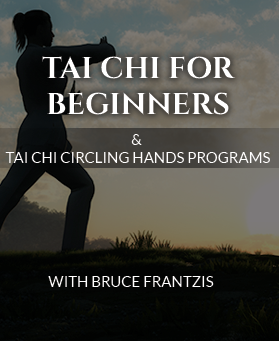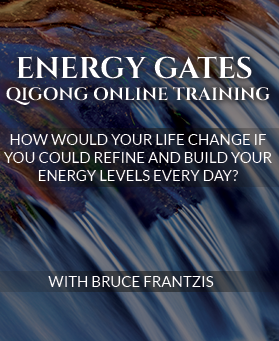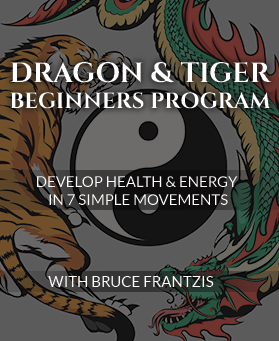In the summer of 1968, I traveled to Taiwan from Japan in search of the internal arts bagua master Wang Shu Jin, who was widely considered to be one of the best empty-hand fighters in Asia. I tracked down Wang’s class, which met at the amphitheater shell in the park in Taichung at 5:30 AM. There were many people in the park at that hour doing all sorts of things, including Shaolin gung fu, karate, tai chi and badminton. Some individuals hung from branches of trees, stretching themselves, some just strolled while others played saxophones.
I was absorbed in this surreal scene, pondering the meeting of ancient China with the 20th century, when a massive man in white pajamas came waddling down the street carrying two bird cages. It was Wang Shu Jin, a rotund senior citizen supporting 250 to 300 pounds on his 5’8 frame.
Testing My Karate Skills
I was 19 at the time, a recognized young karate champion and had brought with me a traditional gift of respect for Wang: a substantial amount of high-quality ginseng. At our initial meeting, Wang did not hesitate to express his low regard for karate, telling me in no uncertain terms that:
“Karate is only for fighting old women and children.”
Karate had been a large part of my life and my passion at the time, this off-hand remark insulted me to the core. I was forced to swallow my indignation. In our ensuing sparring, Wang defeated me thoroughly on every occasion, tapping me lightly at will all over my body to demonstrate his easy circumvention of my defenses.
Despite my best efforts and despite Wang’s enormous girth, his bagua chang enabled him to effortlessly evade all my blows and end up behind me at will. To graphically show me there was much to learn, he allowed me, after several days of study with him, to strike him with full power anywhere on his body.
I put all the force at my command into these strikes, but they might as well have been the blows of a three-year-old. I kicked him in the knees and groin without effect, hit him in the neck and elbowed his ribs. Like many bagua masters, he had the ability to absorb blows without injury. When I kicked him in the shin, my foot hurt long afterward. When I drove my fist into his belly, it felt as if the blow had broken my wrist.
Wang would often tap me on the head during sparring just to demonstrate how easy it would have been for him to demolish me. One time, he tapped me on the head, which instantly dropped me to the ground. I sat there in utter surprise, feeling as if I had just been jolted by a high-voltage electrical current.
After a while, I could tell he was getting bored with my low level of skill and my inability to hurt him. Sometimes, he would grab me with his arms and bounce me three or four times back and forth off his stomach like a yo-yo, my feet would fly in the air. Then Wang would snap me back. I later heard that, as a young man in challenge matches on the Mainland, Wang had actually broken opponents’ spines in this manner. Years later, I learned from another teacher that the only defense against this technique was to turn sideways so that your hip bone (and not your stomach) made contact with his formidable belly. Otherwise, you were finished.
Following my enlightening, however disconcerting, my initial exposure to Wang’s abilities made me want nothing more than to study his bagua. He learned from Chang Chao-Tung, who was known as a student of Dong Hai Chuan, the man credited with making bagua chang public in the late 19th century.
Becoming Wang’s Student
Wang decided to test my sincerity before he accepted me as a student. He gruffly ordered me to assume the bagua chang posture called Wild Goose Leaves the Flock and maintain it until further notice. This static posture calls for one leg to be raised to waist height as the torso is coiled to one side with arms extended. As instructed, I assumed the posture. Holding it minute after minute, I collapsed several times, and each time Wang’s assistant immediately drenched me with a bucket of cold water and ordered me to resume the posture. After two hours of this trial, a smiling Wang agreed to accept me as his student. What was Wang testing? Was it my commitment, ability to endure hardship, sincerity or craziness (that is, passion for the martial arts)? Perhaps it was all of these.
Wang’s fighting skills were astounding. Notwithstanding his age and weight, Wang was unbelievably agile, lightning fast, in excellent health and had incredible physical power. In the West, we assume that if people are fat they cannot be ft, and must be clumsy, slow and must be uncomfortable with their image. Wang certainly showed this stereotype to be inaccurate. He was perfectly at ease with himself. Wang commonly took on full-contact, no-holds-barred challenges from the best fighters in Japan and Southeast Asia and always won. When into his late seventies, he could beat the toughest young men.
Chi Development
On cold practice days, his students would stand around him to warm their hands, as if he were a stove—a testament to his amazing level of chi development. It was from Wang that I first learned how to apply my chi for health and vitality. He also showed me how to use chi to generate power for fighting.
Wang was a deep believer in chi. During our first meeting, he teased:
“I can eat more than you, I can have more sex than you, and I can fight better than you, but you call yourself healthy. Well, young man, there is a lot more to being healthy than being young, and it all comes down to chi.”
His words affected my 19-year-old mind sufficiently to cause a significant shift in my Western way of thinking about the reality of the body and how it works. Wang, it turned out, was also experienced in Taoist meditation, and was an active and knowledgeable master of Taoist sexual energy practices. He taught these subjects to only a select few.
His students were formidable fighters themselves. Their level of skill revealed perhaps more about the effectiveness of the internal arts than Wang’s abilities. They illustrated that Wang was not superhuman, but had a superior combination of talent, dedication and ability to provide quality instruction.
When I started studying with Wang, several of his students, from 15 to 70 years of age, beat the stuffing out me. I could not believe it! Men and women alike were able to hit me with no pulling of my punches. For a proud 19-year-old karate champion to be given a hard time in a fight with an old woman was a bitter pill to swallow. Some of the older people had been with Wang for just a few years.
They trounced me so much that first day, I felt like quitting. I remember distinctly thinking: What are they going to do next, bring out a small child to beat me up? Many of Wang’s students started late in life. In fact, one of Wang’s specialties was taking on people in their fifties and sixties who had all sorts of physical problems and making them healthy and strong.
At that time in Taiwan, elderly people had little to fear from random violence since the police were particularly rough on anyone who victimized them. Accordingly, Wang’s elderly students did not initially come to him to learn self-defense. Nonetheless, even though these older students started studying with Wang purely for health reasons, they still became good fighters since that training was part of Wang’s programs.
Bagua: A Path to become Strong
In Taiwan, I talked with some of Wang’s students who were in their fifties and had only recently begun to study bagua with no previous martial arts experience. They came to Wang because they had started to become impotent or were suffering from chronic diseases.
After practicing bagua, their impotence was reversed and their health, reflexes and clarity of mind improved markedly.
Their chronic illnesses either vanished completely or lessened. Wang’s students constantly tried to find their own chi, opening up the energy channels of their bodies. They would try to replicate the feeling of the chi of a blow Wang delivered to them in a watered-down yet shocking manner.
Wang was an expert at projecting chi. He could issue enormous power that you could feel and be hurt by even when his hand began moving from only slightly away from your body. He could also lightly place his fingers on your chest and project a little chi. He could effortlessly throw you against a wall or put you in such pain that you thought you were going to die. His hand did not move more than a fraction of an inch.
The ability to instantaneously bring all of your power to a single point is one of the techniques that the art of bagua develops. When this methodology is explained, it sounds very clinical, but when the theory is applied to your body, things can be tremendously exhilarating or frightening. Absorbing such chi power can feel like a pleasant gust of wind or a thunderbolt.




0 Comments